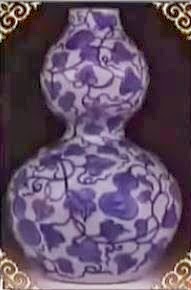Most Singaporeans think that they live in an environment called the Concrete Jungle. This is because when they step out of their houses, they will see buildings and more buildings. There may be plenty of trees planted along roads and highways. These man-make landscapes look rather artificial and unattractive. What happen to our jungle trails and natural habitats?
| Jungle paths |
Dairy Farm got its name in the 1930s, when Fred Heron, then Managing Director of Cold Storage, established the world’s first tropical dairy farm on a 60-acre patch of jungle land. The dairy farm ceased operations in the 1970s, and the area was then used for vegetable farming and subsequently for other horticulture-related operations. In 2002, the Dairy Farm Quarry area was identified as a nature park under the Urban Redevelopment Authority's Parks & Waterbodies Plan.
The Dairy Farm area was among the forests cleared in the 1800s to make way for settlements and gambier and pepper plantations. Its surrounding secondary forest remained rich in flora and fauna. When renowned English naturalist Alfred Russel Wallace stopped over in Singapore in 1854, during his journeys to the Malay Archipelago, he collected about 700 species of beetles in the vicinity of the Dairy Farm site.
The development of Dairy Farm Nature Park is part of a government's strategy to conserve the area’s biodiversity. Today, the Dairy Farm Nature Park, together with Hindhede Nature Park, serves as a ‘buffer zone’ for Bukit Timah Nature Reserve (BTNR). Both parks help to divert visitorship from the Nature Reserve to minimise human impact to the reserve area, while providing interesting recreational and educational options for all visitors.
Inside the nature reserves, you can find an unused Quarry which has been transformed into a scenic and tranquil wetland with a viewing platform for visitors to appreciate the freshwater flora and fauna. The Quarry is already home to many rare dragonflies and birds, including the Little Grebe, a critically endangered bird that was previously found only in Lorong Halus.
| Wallace Education Centre |
Further into the nature reserves there is the Wallace Education Centre, another feature of the park, which was restored from a former cowshed. The WEC now houses an interpretative centre where visitors can learn about the changing landscapes of Dairy Farm and Bukit Timah Nature Reserve through various exhibits. It also houses the Wallace Environmental Learning Lab (WELL), a holistic programme for students to discover Singapore’s natural heritage through interesting hands-on activities. WELL was established by NParks and Raffles Girls’ Secondary School and sponsored by Glaxo SmithKline.
To make the Dairy Farm Nature Park even more ‘green’, many of its features were designed to be environmentally friendly. Recycled materials were used for buildings and benches, while the hiking trails were made from bitumen milled off from roads and expressways.
Indeed, the WEC is designed to maximise the use of natural sunlight, and solar panels have also been installed on its roof to generate electricity to run the centre. This is the first park to have been built with the intent of achieving BCA/NParks Green Mark.
 |
| Minister Mah touring the Park |



















